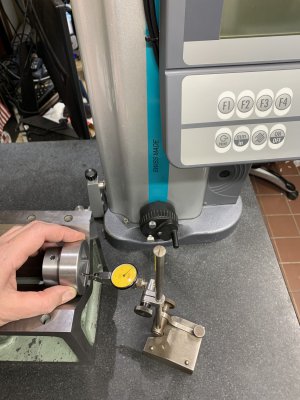- Joined
- May 3, 2020
- Messages
- 363
Is there a better way to get a part (in a V-block) parallel to the surface plate?
I'm measuring the flats in a socket. Unfortunately, it must be quite level to get an accurate reading. I've been sweeping the flat with an indicator, then going back to the TesaHite to get the measurement. Back and forth. Same for the drive end, but it's a different height. I'm constantly adjusting the indicator to sweep the flat. I have quite a few of these to do. Is there a better way to do this?
I'm measuring the flats in a socket. Unfortunately, it must be quite level to get an accurate reading. I've been sweeping the flat with an indicator, then going back to the TesaHite to get the measurement. Back and forth. Same for the drive end, but it's a different height. I'm constantly adjusting the indicator to sweep the flat. I have quite a few of these to do. Is there a better way to do this?

